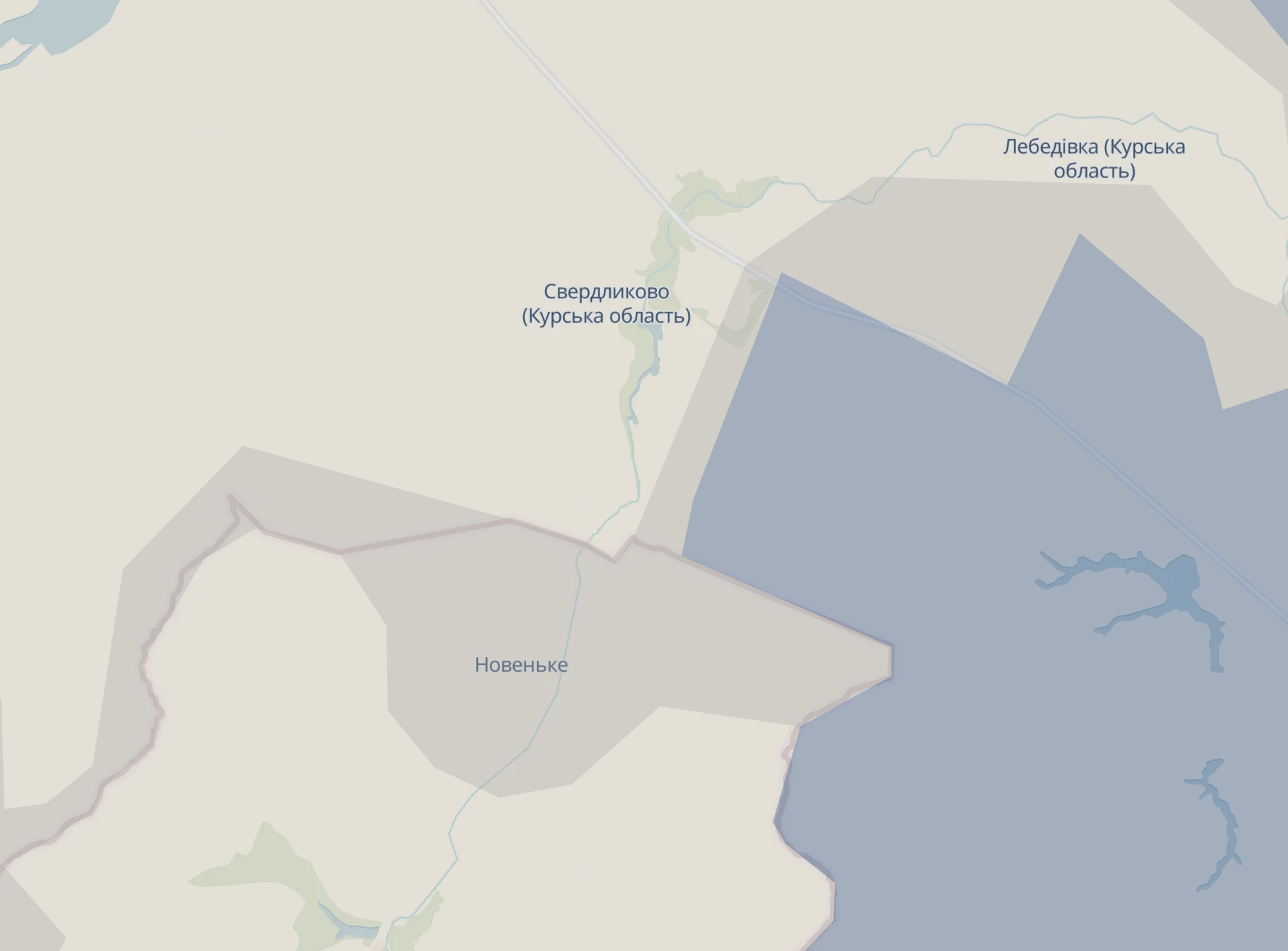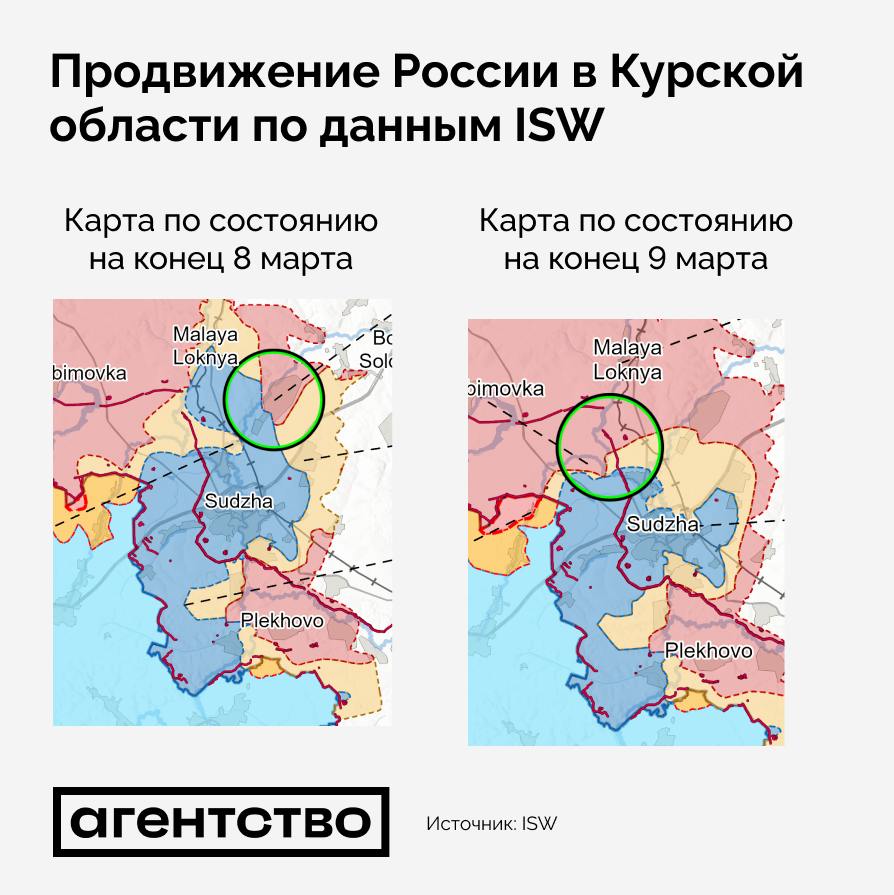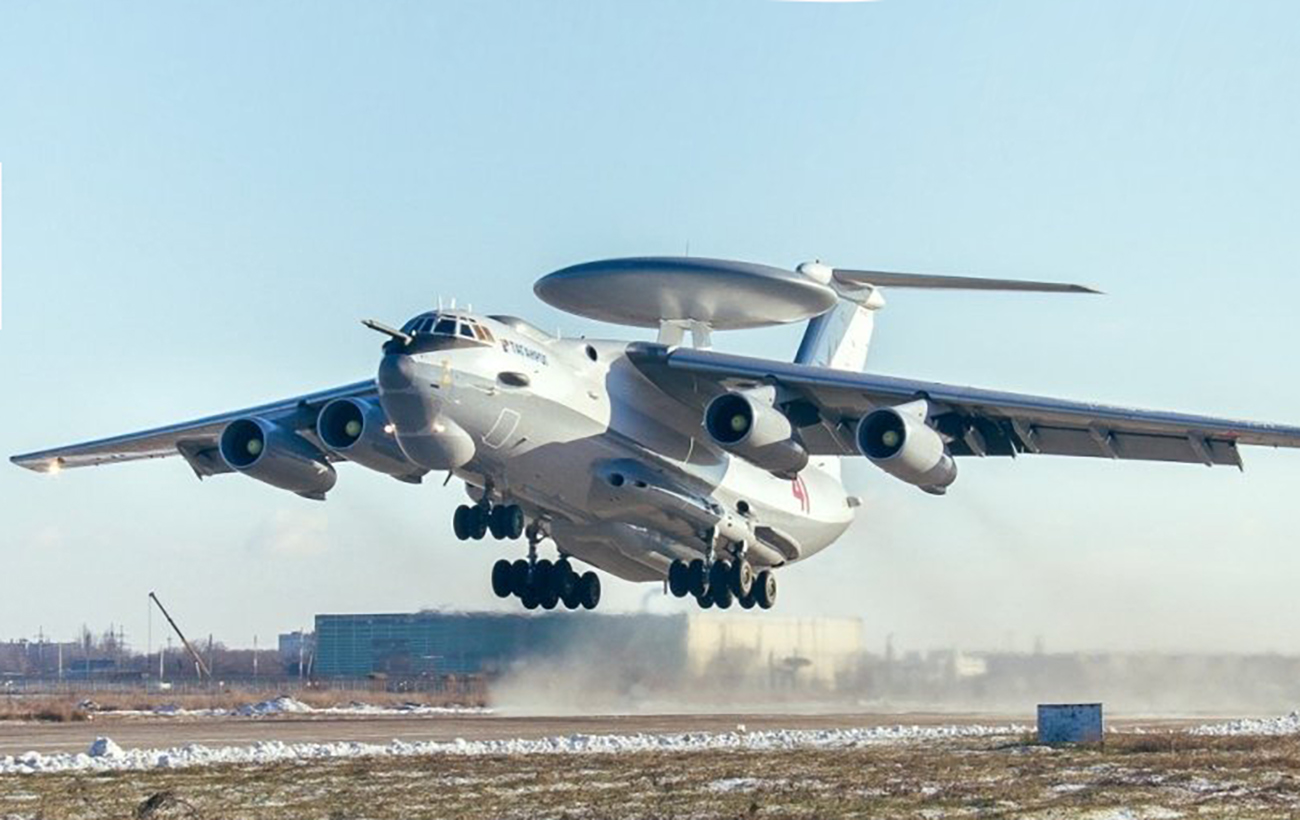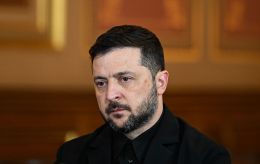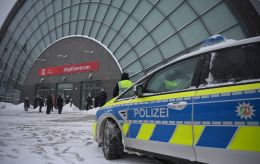What's happening with Ukraine's positions in Russia's Kursk region amid US military aid pause
 Photo: The road to Suzha, which is important for the Ukrainian Armed Forces logistics, is under Russian fire control (Getty Images)
Photo: The road to Suzha, which is important for the Ukrainian Armed Forces logistics, is under Russian fire control (Getty Images)
The situation in the Kursk region has worsened lately. The Russian military, attempting to cut off the logistics of the Armed Forces of Ukraine (AFU), has made advances toward the critical Sumy-Sudzha highway and to some extent has reduced the width of the Ukrainian forces’ bridgehead, which, in turn, are planning countermeasures.
What is happening in the Kursk region, what are the reasons for the escalation, and will the AFU be able to hold the buffer — find out in the RBC-Ukraine report below.
Contents
- Russians are pressing from different directions. What is happening in the Kursk region
- Failed Russian 'operation'. How the enemy attempted an incursion through a gas pipeline
- What caused the escalation, and is it critical?
In August 2024, Ukrainian forces entered Russia's Kursk region and established control over some of its territory, including the town of Sudzha, the administrative center of the Sudzha district.
As Ukraine's military-political leadership explained, the goal of this operation was to force the Russians into a just peace and to prevent an offensive in the Sumy region, which had been planned.
Over seven months, Russian forces regained control over most of the territories. The Russians launched a counteroffensive a month after the Kursk operation began. They deployed thousands of North Korean troops in the region for counteroffensive actions.
In recent weeks, the situation has escalated. At the end of February 2025, reports emerged that the Russian army had allegedly broken through the Ukrainian defense line and supposedly secured positions in the village of Novenke in the Sumy region.
Russians are pressing from different directions. What is happening in the Kursk region
According to Andrii Kovalenko, head of the Center for Countering Disinformation, the Russian plan is predictable and clear — they aim to reach the rear of the highway running from Yunakivka to Sudzha in order to disrupt the logistics of Ukraine’s Defense Forces.
"But we have known this plan in advance, which is why significant losses are now being inflicted on enemy assault groups. Fighting continues in the border and frontline areas," Kovalenko added.
The Russian Telegram channel Mash reports that this concerns the so-called "lifeline" — the only paved road between Ukrainian Yunakivka and Russian Sudzha, which is crucial for complicating AFU supply lines and logistics.
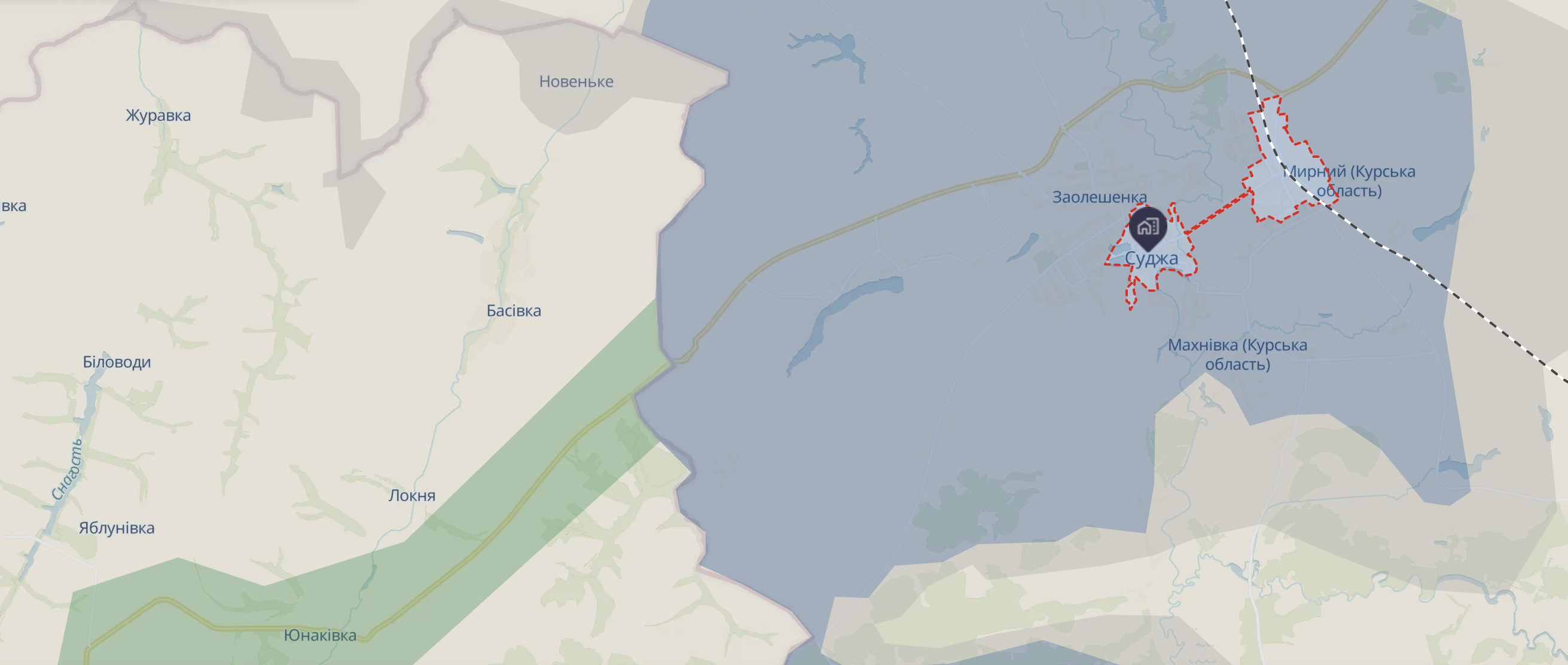 Map: The Sudzha-Yunakivka road is under Russian fire (DeepState)
Map: The Sudzha-Yunakivka road is under Russian fire (DeepState)
"The Yunakivka-Sudzha road is under enemy control. Russian FPV drones fly over almost every five minutes. They operate on new frequencies. Our artillery and drones with munitions drops are operating at only 20% of their potential. It is impossible to deliver UAVs and ammunition," reports Suspilne, citing a soldier defending the Kursk region.
RBC-Ukraine sources confirm the Russian plan and add that the adversary aims to create an operational encirclement of Ukrainian troops. Measures are currently being taken to stabilize the situation, and counteractions are being planned.
Russia's current plan is to cut off the Sudzha-Sumy road, thereby creating an operational encirclement of Ukrainian forces.
On March 7, 2025, the Ukrainian project DeepState reported that the most critical situation is currently unfolding on the border between the Kursk and Sumy regions, where the enemy is making active efforts to pressure Ukrainian positions.
Analysts report that Russians have advanced in the Kursk region toward the key Sumy-Sudzha supply route from the east. This has put Ukrainian forces on Russian territory at risk of encirclement.
"The most difficult situation is in the Novenke area. The enemy is amassing forces in the village and attempting to move toward Basivka, beyond which lies the path to the Sudzha checkpoint, aiming to physically cut off logistics coming from Yunakivka. The enemy has numerical superiority, which poses additional challenges," DeepState reports.
Map: Novenke marked as gray zone (DeepState)
Military expert Pavlo Narozhnyy explains that the Russians are present in Novenke (Sumy region). This settlement is located approximately 6-7 km from the former customs checkpoint Yunakivka. This checkpoint serves as the route for the largest road leading to the Kursk region.
"And along this road, a significant portion — at least 70% — of all supplies to the Kursk region likely pass. That is why it has led to the Russians' success in the region," says Narozhnyi.
There have been no official statements from the General Staff on the presence of Russians in Novenke. On the DeepState map, this village is in the gray zone. Today, State Border Guard Service spokesman Andriy Demchenko said on Ukrainian TV that the enemy is trying to create an active combat zone in the Sumy region, continuing its attacks towards the village and attempting to establish a foothold.
According to him, Russian assault groups are small, entering Ukrainian territory in groups of only a few people. They then gather and launch assaults. One of Russia's main objectives is to cut off logistical routes.
Russia is also becoming more active on the right flank of the Kursk Defense Forces grouping, near the village of Kurylivka on the Sumy region border. The goal remains the same: gaining additional control over logistics, analysts say.
Meanwhile, the American Institute for the Study of War (ISW) reports that Russian forces have captured the northern salient of the Ukrainian Armed Forces in the Kursk region and are advancing in the Sudzha area. Allegedly, Russian troops have taken control of:
- Novaya Sorochina (18 km northwest of Sudzha);
- Malaya Loknya (15 km in the same direction from Sudzha);
- Lebedevka (9 km in the same direction from Sudzha), as well as fields between these settlements.
According to DeepState data, this list also includes Martynovka. Also, ISW, citing geolocated footage, reports that Russian forces have approached Kazachya Loknya, located 5 km north of Sudzha.
Large-scale Russian assault operations have also taken place in the direction of Korenevo towards Sudzha, as well as from Novoivanovka.
Photo: The area Ukrainian forces may no longer have control of in the Kursk region north of Suzha (ISW maps)
According to informed sources of RBC-Ukraine, the width of the Ukrainian bridgehead in the Kursk region has now shrunk to 11 kilometers. The defense and combat operations there are complicated by forested terrain and the enemy's widespread use of fiber-optic drones.
However, as the sources explain, the situation is not yet catastrophic, and Ukrainian forces are not currently encircled.
Failed Russian 'operation'. How the enemy attempted an incursion through a gas pipeline
According to open sources, Russian forces attempted to infiltrate Ukrainian-controlled territory through a pipeline of the Urengoy-Pomary-Uzhhorod gas pipeline (which has been out of operation since January 1).
Ukrainian Armed Forces officer Myroslav Hai wrote on his Facebook page that Ukrainian paratroopers were aware of the enemy's plans and preempted them by setting up an ambush. At the critical moment, they blocked the pipeline exit, making the evacuation of the enemy group impossible. As a result, 80% of the Russian personnel were eliminated.
Later, the Ukrainian Air Assault Forces also confirmed the failed Russian operation on their official page. Ukrainian soldiers verified the destruction of Russian troops moving through the gas pipeline towards Sudzha in an attempt to establish a foothold on the outskirts of the city.
"The enemy forces were timely detected by aerial reconnaissance units of the Ukrainian Air Assault Forces. Missile and artillery strikes were launched on enemy personnel, along with the use of various types of unmanned systems. At present, Russian special forces units are being identified, blocked, and destroyed. Russian losses in the Sudzha area are extremely high," the Air Assault Forces' statement reads.
Online reports say that the Russian-deployed unit, which attempted an incursion through a gas pipeline, consisted of about 100 personnel but this information is not confirmed.
What caused the escalation, and is it critical?
Ukrainian soldiers who spoke to New York Times journalists on Friday and Saturday stated that the lack of intelligence from the US is particularly problematic for their troops in the Kursk region, as Russian and North Korean forces are advancing and making rapid progress there.
A senior US military official confirmed to the media that Ukrainian forces have found it more difficult to attack Russian troops in this area due to the absence of intelligence from the US.
Analysts from ISW, in their latest report, also pointed out that this period coincided with a faster advance of Russian forces in the region. Thus, analysts suggest that the suspension of intelligence sharing by the US has been a significant factor complicating the operations of the Ukrainian Armed Forces (AFU) in the Kursk direction.
Meanwhile, British The Telegraph reports that 10,000 Ukrainian troops are at risk of encirclement after the Russian army broke through the front line and advanced on a key supply route from two directions. The article says that the AFU in the Kursk region is at risk of encirclement due to the US intelligence ban.
Military expert Pavlo Narozhnyy notes that Russian forces in the Kursk region are currently trying to take advantage of a "window of opportunity." Yet, he attributes it more to a pause in US military aid to Kyiv rather than just the suspension of intelligence sharing.
"It's about ammunition and everything else that the US has stopped providing. And to some extent, it has played a role," Narozhnyy told RBC-Ukraine.
The expert adds that overall, Russian forces are employing standard tactics. The enemy has managed to reclaim some territory frontally in the Kursk region. However, the main problem is different - the Russian military has managed to approach the AFU's supply lines, significantly complicating logistical support for the Ukrainian grouping.
Amidst Russian advances in the Kursk region, monitoring channels have reported the activity of an A-50 airborne early warning and control (AEW&C) aircraft in Russian airspace after a long hiatus. Online sources have linked this to the alleged preparation for a new large-scale missile strike. Narozhnyy, however, sees a different objective of the enemy.
Photo: Russian long-range radar detection and control aircraft A-50 (Russian media)
"Russians have deployed the A-50 into the air, and it is very likely operating over the Kursk region. It can detect both aerial targets — such as our aviation, which is actively engaged in the Kursk region and border areas — as well as ground targets. It has the capability to detect aircraft and other aerial targets at a range of 500–700 km, and ground targets at about 300 km. This is the main reason why the situation in the Kursk region is currently unfavorable for us," the expert explains.
Summing up, he assures that the situation in the Kursk region is not critical at the moment.
"Russians are currently launching drones along the road to Yunakivka from Novenke. They can also hit the area with mortars. So the issue is how we can clear the enemy from this Novenke forest strip, which is located nearby. Once we neutralize the Russian impact on this road, the situation will stabilize. I believe it is only a matter of time," Narozhnyy says.
He agrees that the AFU can potentially continue holding positions in the Kursk region, as it is of great strategic importance for Ukraine.
"This is a buffer zone for the Sumy region and a way to divert Russian resources from Kharkiv. In other words, as long as we have this buffer zone in the Kursk region, the Russians cannot launch an offensive on Sumy and Kharkiv," the expert adds.
Earlier, President Volodymyr Zelenskyy did not rule out that if negotiations with Russia were to begin, Kyiv might propose a direct territorial exchange — specifically, offering the Kursk region in exchange for Ukrainian territories. He did not specify which ones.
The Ukrainian president also suggested that the Kursk operation could play a role in future negotiations to end the war, which US President Donald Trump insists on, advocating for an "immediate ceasefire."
Sources: statements from Andrii Kovalenko, head of the Center for Countering Disinformation (CCD); reports and maps from the Institute for the Study of War (ISW); DeepState maps; Telegram channels Agentstvo and Mash; Suspilne; statements by State Border Guard Service spokesperson Andriy Demchenko; Facebook pages of AFU officer Myroslav Hai and the Ukrainian Air Assault Forces; New York Times; The Telegraph; and an exclusive comment by expert Pavlo Narozhnyy for RBC-Ukraine.
